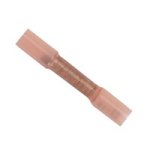varmint
Elite Member
- Joined
- Mar 17, 2003
- Messages
- 2,576
- Location
- Northern Maryland
- Tractor
- Kubota B8200, then a Kubota L3130 HST, now a Kubota L3400 HST
Waterproof rubber caps are good! I wouldn't use wire nuts- crimp on insulated connectors, or better yet, heat shrink tube over soldered connections will prevent corrosion issues down the road. If you want fuse protection, check out eBay for in-line mini-fuses... a buck or two, delivered, and easy to install!
1pcs in Line Car Mini Blade Fuse Holder Waterproof 16AWG 30A 12V 24V 32V DC CN1G | eBay
1pcs in Line Car Mini Blade Fuse Holder Waterproof 16AWG 30A 12V 24V 32V DC CN1G | eBay
